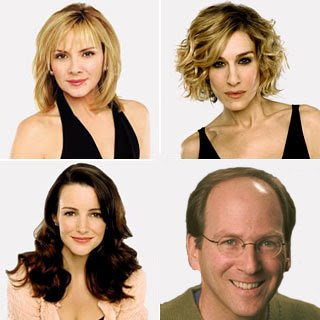Math in the Movies: District 9
 In continuing with the theme of discussing movies before I see them, I'd like to say a few words about the upcoming film District 9. You can see the trailer below, if you haven't heard of it (although if you live in LA it's difficult to plead ignorance, since the viral marketing has been on full blast all summer).
In continuing with the theme of discussing movies before I see them, I'd like to say a few words about the upcoming film District 9. You can see the trailer below, if you haven't heard of it (although if you live in LA it's difficult to plead ignorance, since the viral marketing has been on full blast all summer).
It's natural to ask what a film about aliens living in South African refugee camps has to do with mathematics. Aside from the obvious (no doubt any intergalactic species must have a good working knowledge of mathematics), I'd like to point you to an aspect of the marketing campaign for the film that's featured on the official website. If you look in the lower right, you will see a link to a site that immediately aroused my interest: Maths From Outer Space.
The purpose of this website is best summarized in its own words:
Maths From Outer Space wants to redefine what it means to be human! Our scientists have found a way to enhance the spatial and logic capabilities of...
Read a Mathematician’s Lament
I recently had the pleasure of stumbling across Paul Lockhart's essay, A Mathematician's Lament. Lockhart, a former research mathematician in analytic number theory who received his Ph.D. from Columbia in 1990, decided to leave academia in 2000 in order to concentrate on K-12 math education, which he hass been doing at Saint Ann's School in Brooklyn.
Lockhart's article lambasts the current state of mathematics education in this country. Some of his main points are the following:
- Mathematics is an art form, but unlike other art forms like music or painting, is not understood as such by the general population. As a result, students are not exposed to the beauty of mathematics, and are instead taught through drill and memorization, which effectively kills any natural curiosity the student may have.
- The most important part of mathematics lies not in the facts or theorems that students memorize, but in the arguments that show why these facts must be true. By stripping away the beauty...
Restructuring the Math Pyramid?
A friend recently shared with me the following video from TED (see below). In it, mathematician (or, in this case, mathemagician) Arthur Benjamin gives a brief argument for eliminating calculus as the top of the "mathematical pyramid" in high school education, and replacing it probability and statistics. The main reason for this shift is that unless you are planning to have a career in a technical field, it's unlikely you'll find a use for calculus in your everyday life, but an understanding of statistics can benefit you no matter what you do. For example, it can help you to build an intuition about day to day decision making when risk and uncertainty are involved. Here's the video (it's short, only a couple of minutes):
A noble goal, to be sure, and it's certainly a solution that wouldn't cost a whole lot. There is an argument to be made for such a change lurking in here somewhere, but coming in at under 3 minutes, Benjamin's argument barely scratches the surface. In no particular...
Math in the Movies: Revolutionary Road
This past week I watched Revolutionary Road, the Oscar nominated 2008 film directed by Sam Mendes. The film stars Leonardo DiCaprio and Kate Winslet as a highly dysfunctional couple named the Wheelers, who live in 1950s suburban Connecticut. For those of you who may not have seen this feel-good picture, here's a trailer:
The trailer doesn't address the question of what this film has to do with mathematics. The answer lies in the character of John Giving, a "mathematician" played in the film by Michael Shannon (who turned in an Oscar-nominated performance).
We first hear of John Giving from his mother, who informs Mrs. Wheeler that her son has a brilliant mind, as evidenced by his PhD in mathematics, but that he has been institutionalized, and his doctors have suggested that it would be good for him to go out and make some friends. This introduction did not bode well for the film's representation of the mathematically inclined, but how did the rest turn out?
Let's explore the...
Math Gets Around: On Birthdays and Trading Cards
Today marks the 1 year anniversary of Math Goes Pop! I started on somewhat of a whim after reading an article about compulsory Algebra I education for all California 8th graders (although what with our finances down the toilet, who knows what the current status is here). When I started writing I wasn't sure there was enough content out there to sustain a blog with this one's focus. Once I started digging, though, I found that the rabbit hole went quite deep, and so here I am a year later with plenty left to talk about (the recent obsession with pointless math holidays certainly has helped with my output).
Given the date, it seems fitting to begin by mentioning the birthday problem. This is a standard problem given in any introductory probability course, but many people find the result counter intuitive at first.
The birthday problem asks a simple question: if you have a room full of people, how many people do you need so that there's a 50% probability that at least two of them...
USA Today, you are also on my list
It bothered me when USA Today, in an article celebrating "math holidays" centered on the numerology of certain dates, linked to a post I had written about how these holidays are stupid, without even mentioning my contrary opinion. However, I was willing to let it slide, since I was able to say that I was linked in an article from USA Today. Unfortunately, an article posted today is just too much. USA Today, you have officially made it onto my list.
The headline for the article really speaks for itself: "Rare time/date alignment could mean opportunities." This refers to the fact that in the wee hours of the morning today, it was 4:05:06 on the date 07/08/09.
Money quote:
Although the alignment may not mean anything specific, it could be a good day to do something for yourself and others, said Betsy Carlson, a Palm Springs tarot card reader and numerology expert.
"It's a good day to make money and have good health," she said.
When is it not a good day to have good health? Who wakes...
Ron Gordon, you are on my list
Not this again. I've now discovered that the mastermind behind these so-called math "holidays" is a teacher named Ron Gordon. Not only was he the one to spearhead the Odd Day initiative 2 months ago, but he's gone so far as to double dip and call today Odd Day as well, citing the fact that standard date notation for most of the world is DD/MM/YY, rather than MM/DD/YY.
Thanks for double dipping, Mr. Gordon, so that I can read these pointless articles yet again. Mr. Gordon has even set up a web page and a contest, with cash prizes for those who can celebrate Odd Day the most enthusiastically. Needless to say, I don't think I will be the recipient of any such prize.
The road to hell is paved with good intentions, Mr. Gordon. I'm just sayin'.
Decimal Point Fail, Ctd
I apologize for my silence over the past few weeks - I have been out of the country learning math and eating pancakes. While I get back into the swing of things, I've got a couple of points to mention that relate to earlier posts regarding our collective inability to correctly use the decimal point.
The first is a picture from a flyer advertising maid service. Here's the ad (sent in to me by a dedicated foot soldier in the army that is my readership, a.k.a. my mother):
 Names and phone numbers have been cropped out to protect the innocent. But in a case such as this, are there really any innocents?
Names and phone numbers have been cropped out to protect the innocent. But in a case such as this, are there really any innocents?
Although we've seen decimal point errors on signs before, this one is arguably the most egregious of all. Presumably the intended price is $100 - if that's the case, then not only is the decimal point in the wrong place, it's not even necessary. It's hard to imagine how this mistake could've been made and then gone unchecked, but if you live in San Francisco and are looking for some...
Math Gets Around in the Big City
Math has gotten a bit of a visibility boost recently, in the form of posts by professor Steven Strogatz at the New York Times blog. For three weeks, starting at the end of May, Professor Strogatz filled in for usual blogger Olivia Judson, and during that time he used the platform to write some highly readable musings that show the presence of mathematics in unlikely places, and touch on some of the directions math is headed in the 21st century.
Let me highlight the first post, titled "Math and the City." Professor Strogatz begins this article by describing Zipf's law, an observation attributed to linguist George Zipf regarding the distribution of words in a language (for a linguistic motivation, you can check the Wikipedia article on Zipf's law).
In the context of cities, the law states the following: in a given country, if you rank the cities within that country by population, the largest city should be about twice as large as the second...
The Cheapest Salad Bar in the World
Last week, I went to a number theory conference in Utah. The conference was very good, and I learned quite a lot, which I suppose is the goal of any such conference. The location of the conference itself was also quite nice - it was close to the mountains, a lake, and the home of Blendtec, famous for their "Will it Blend" series of videos.
As you might expect, most of what I learned on this conference pertained to number theory. However, there were lessons outside of this sphere of knowledge as well. The one lesson I will share with you is best encapsulated in this picture:
It was my friend Jack who pointed out the placement of the decimal point. Apparently the people who work in cafeterias in Utah are the same people who work at Verizon call centers. If you ever want cheap salad, I guess this is the place to go - $0.0029 per ounce is a price that can't be beat!
It's unlikely that anyone will try to exploit this small misprint to...
Page 15 of 20


